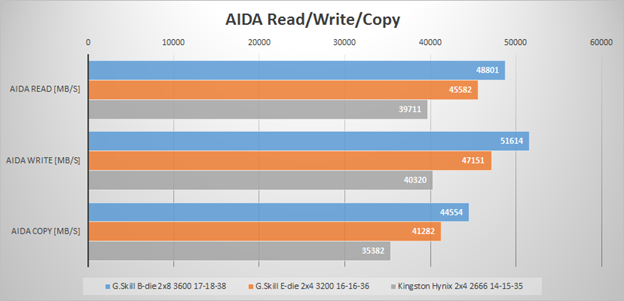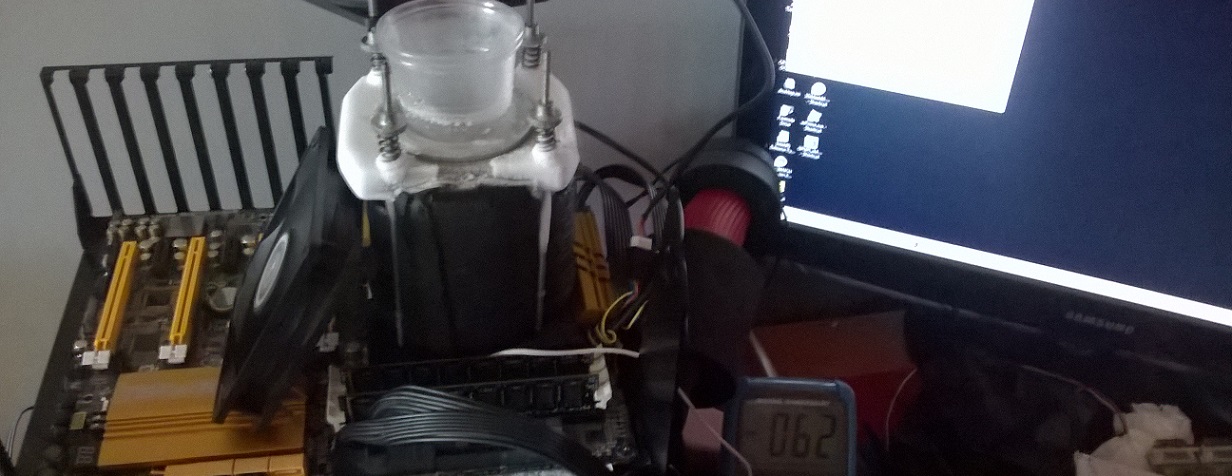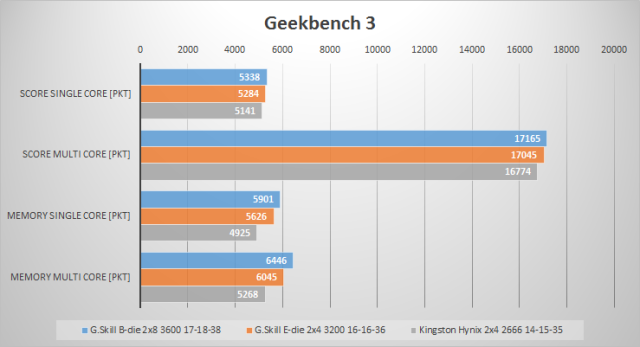Earlier this year I researched information for an article which will be published on overclock.pl anytime soon. The article is going to cover comparison of performance of DDR4 modules in synthetic benchmarks and their overclockability. For that purpose, I will use following benches in their default settings as per HWBOT rules:
- SuperPi 32M
- XTU – version 6.0.28
- Geekbench – version 3.4.1 64-bit
- AIDA – version 5.7.0
The test platform consists of air cooled setup of:
| Component | Model | Settings |
| Motherboard | Asus Maximus VIII Hero | |
| CPU | Intel Core i5 6600K | 100 x 48 = 4800 MHz
1.28 vcore Cache multi: 45 |
| Cooling | CPU: Scythe Mugen 3B + Arctic 120 mm
RAM + MOBO: Enermax TwisterStorm |
|
| PSU | Corsair RM850 | |
| SSD | Samsung 850 EVO 128 GB |
OS used is Windows 7 SP1 64-bit. All settings are constant apart from RAM. Presented results will be average of 5 runs.
Memory kits used in the test and DDR4 ICs on them:
- G.Skill TridentZ 3600C17 (2×8 GB) – Samsung B-die
- G.Skill RipjawsV 3200C16 (2×4 GB) – Samsung E-die
- HyperX Savage 2666C13 (2×4 GB) – Hynix MFR
Results on default settings
The results here are achieved using XMP profile in RAM SPD – XMP profile is loaded in BIOS, system is booted and off we go 🙂
XTU
XTU is most used benchmark for 2d ont HWBOT in last months, mostly due to fact that it’s bundled with Intel motherboards. It’s interesting to see that HyperX win here with much theoretically faster RipjawsV. This will lead into conclusion that G.Skill XMP profile contain quite loose timings to allow booting high speed on low volts on most motherboards.
Geekbench
HyperX lose a lot here due to lower working frequency, which is clearly visible in “Memory” tests. This confirms the hypothesis that frequency is very important for DDR4
AIDA
Due to the fact that different scales are being used data is displayed in 2 charts:


AIDA results confirm G.Skill advantage due to higher working frequency. Interesting thing is that latencies on both are similar, but B-die kit has higher operating frequency which translates into better bandwidth.
SuperPi 32M
SuperPi 32M results support previous observations – memory performance depends a lot on the frequency, and loose timings in G.Skill XMP profile make the chart a bit flat.
This concludes the test setup and baselining on stock settings. Next parts should be more interesting when we start overclocking and observe some patterns. I plan to divide it into several parts:
- safe OC for 24/7 – with 1.45 volts
- bench safe – with 1.55-1.7 volts range
- full out – with 1.75 volts and above
- summary to see scaling results
It was a lot of fun for me to prepare the results, but if you have some comments or questions, or just want to point my poor efficiency, feel free to drop me a note.




Pingback: Comparing DDR4 IC on Z170 platform – part 2 – 24/7 overclocking setting – Phobos OC musings
Pingback: Comparing DDR4 IC on Z170 platform – part 3 – 1.55 volts, safe and brave :) – Phobos OC musings